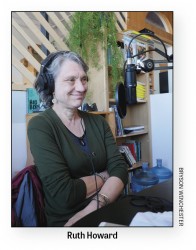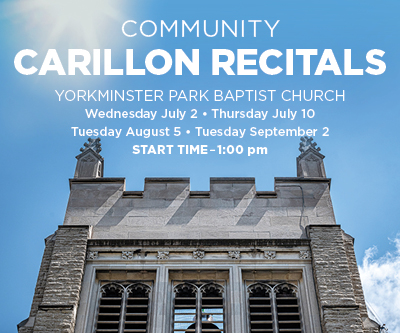![]()
 In the well-known Edward Lear nonsense poem from which Jumblies Theatre derives its name, the Jumblies set sail in search of adventure, less than adequately provisioned. As the end of the opening stanza has it:
In the well-known Edward Lear nonsense poem from which Jumblies Theatre derives its name, the Jumblies set sail in search of adventure, less than adequately provisioned. As the end of the opening stanza has it:
Far and few, far and few,
Are the lands where the Jumblies live;
Their heads are green, and their hands are blue,
And they went to sea in a Sieve.
You can see where, as an image, this would have captured the imagination of Ruth Howard, almost 20 years ago, precisely because of the great and glorious impracticality of it all. How fine to be launching an arts venture which almost by its inherent design would be nigh impossible to keep afloat following the usual professionalized arts rules: one-, two- and three-year business plans; spit-spot arts management; immutable calendar-based deadlines for shows and grants and budget reports.
Howard and I met in late April in The WholeNote podcast studio, to talk about a current Jumblies’ project, titled Touching Ground Festival. Official start and end dates for Touching Ground are May 13 to June 23, but its tendrils extend backwards in time, more than a decade, and its potential offshoots extend just as many years into the future, because of the astonishingly dense web of community-based, social and artistic connections, that go into every project this remarkable organization undertakes.
Just the description of Touching Ground in Jumblies’ own releases about the festival, speaks to this layered complexity: A suite of new works inspired by three years of exploring themes of Toronto’s layered and Indigenous histories and present landscapes. All works and events feature community members as art-makers, singers, dancers and performers, and many artists from Jumblies and our offshoots and partners.
The range of activities encompasses installations, audio tours, newly created short films and discussions about them, photographic and art exhibitions, dance and creative explorations, open art-making drop-ins, a work-in-progress musical, a comic book launch, and other workshops and presentations.
And there is music everywhere, lots of it, including: the ongoing involvement of Jumblies own “mixed-ability choir” directed by Shifra Cooper; Métis fiddle tunes by Alyssa Delbaere Sawchuk; a new choral work by Martin van de Ven, with original songs by Rosary Spence, inspired by and running concurrently with an installation about Toronto’s Treaty histories and current implications.
Of particular note, in terms of The WholeNote’s usual musical preoccupations, on Saturday and Sunday, June 3 and 4 at the Evergreen Brick Works, will be a performance titled Four Lands presented with Continuum Contemporary Music, and including new musical works created by composers Jason Doell and Juliet Palmer. Palmer is no stranger to Jumblies’ ways of working, having been the composer for the community play, an adaptation of Shakespeare’s Winter’s Tale, that was the culmination, in 2011, of Jumblies’ four- year community arts residency in East Scarborough.
The range of venues announced so far is as wide-ranging and eclectic as the range of activities: the Ground Floor (Jumblies new City Place street-level home base/studio, just east of Bathurst and north of the Gardiner); the previously mentioned Evergreen Brick Works; the new Fort York branch of the Toronto Public Library; under the Gardiner; Canoe Landing Park; Historic Fort York; and Cedar Ridge Creative Centre in Scarborough, which exists as a legacy project of Jumblies’ earlier East Scarborough community play project.
In all this welter of facts it’s hard to get a fix on what makes this festival a cohesive “thing,” a bit like trying to figure out what it is that made Edward Lear’s Jumblies sieve a boat! The answer to that lies partially in looking back at the “thing” called “the community play” an idea developed by English theatre professionals-turned activists Ann Jellicoe and Jon Oram and exported to Canada right at the start of the 1990s. Dale Hamilton’s Spirit of Shivaree which took place in the ruins of the Old Woolen Mill in Rockwood, Ontario, was the first instance of community play principles put into practice here, and it was in Rockwood that Ruth Howard caught the bug. She talks about it interestingly and at length in our podcast interview so I’ll be brief here. Basically the community play involves going into a community for no less than 24 months for the purpose of creating a theatre work on an epic scale, about, with and for that community, based on “wholehearted social inclusion” of everyone who wants to get involved, and a commitment to ongoing rewriting of the script so that everyone who wants a part can have one. And just as important, to bring to the undertaking the same professional commitment, resources and aesthetic standards as to any professional production.
For Jellicoe and Oram, the community play movement almost by definition entailed a retreat from large urban centres. Howard’s efforts have taken an intriguingly different path, seeking out the living smaller communities within the megacity, disempowered by amalgamation: Mabelle and Dundas in Etobicoke; Lawrence Heights; Davenport-Perth; East Scarborough: each in turn became home base for Jumblies for three or four years at a time, while the community itself crafted the story that needed to be told there.
In the final stanza of Edward Lear’s The Jumblies, after “twenty years or more” the Jumblies reach dry land, safe at home again: “And everyone said, ‘How tall they’ve grown!’”
“Tall” might not be quite the right word, but with Touching Ground, one senses that Jumblies has moved, in some ways, beyond its community play roots but without abandoning their principles.
The company’s extraordinary Train of Thought project in 2015 saw them travel west to east across Canada: 70 artists, two and a half months, 25 stops, hundreds of participants – following the railway, finding stories, abandoning the railway in the places where the railway has done the abandoning “so sometimes a minivan convoy of thought, sometimes a chartered bus of thought, whatever it took. Starting before the Truth and Reconciliation Committee but catching up with each other as we went.” What made that project possible, Howard says, was the three years of outreach that went into it, community by community, not just arriving on the scene. Ideas and artifacts born of that tour are everywhere to be found in Touching Ground.
Another big change for Jumblies is, for the first time, having a viable urban base (albeit in a faceless new urban neighbourhood struggling for an identity) to use as the “Ground Floor” from which to launch its forays. A third, and perhaps most thought-provoking change, is in the kind of partnership the Four Lands performances at the Evergreen Brick Works represent: partnerships, encouraged by arts agencies, with established, “shipshape” organizations like Continuum, and others. It will be interesting to see as, and if, these partnerships evolve over the years, who benefits more from the association. Expertise in keeping sieves afloat is no small talent in these artistically troubled times.
For more details on the Touching Ground Festival as it develops visit touchinggroundfestival.ca
David Perlman can be reached at publisher@thewholenote.com



